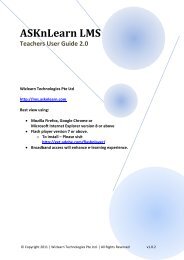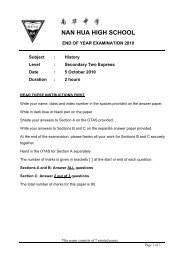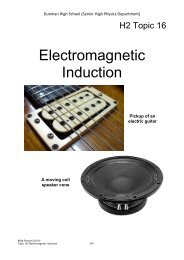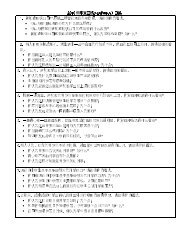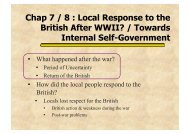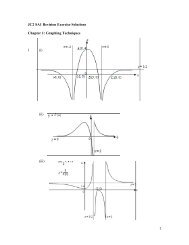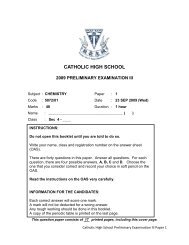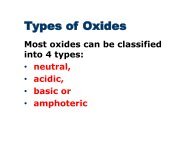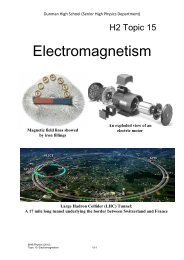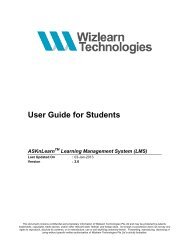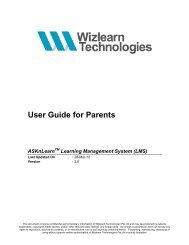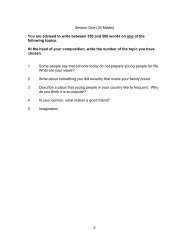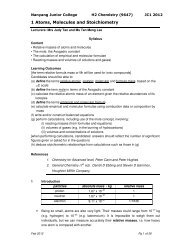Suggested Answers of BT2 Revision Package - ASKnLearn
Suggested Answers of BT2 Revision Package - ASKnLearn
Suggested Answers of BT2 Revision Package - ASKnLearn
- No tags were found...
You also want an ePaper? Increase the reach of your titles
YUMPU automatically turns print PDFs into web optimized ePapers that Google loves.
Furthermore, if we assume that the demand for flights is price elastic, all we need is justa small increase in tax, and it can result in a more than proportionate fall in quantity <strong>of</strong>flights. This will render the tax policy even more effective.However, there are limitations. It is difficult to exactly pinpoint how much <strong>of</strong> the flight taxis to be charged. Any under-estimation <strong>of</strong> the tax will result in the tax policy ineffective asthe socially optimal level has not been reach yet, or it can result in a different problemwhen over-estimating: under-consumption. It also takes time to pass the legislation toapprove <strong>of</strong> the new tax policy, which may face fierce resistance. The difficulty <strong>of</strong>estimating the exact tax amount is enough to put policy-makers <strong>of</strong>f.An example can be seen when the European Union intended to impose a flying taxbased on the distance an airline travelled from its point <strong>of</strong> departure. Critics claim that itis unfair and penalises those airlines which have to travel longer distances from Asia orAustralia.Another solution could be in the form <strong>of</strong> direct regulation. Governments could pass lawsthat mandate airlines to limit the amount <strong>of</strong> pollution that they can generate via tradablepermits. Tradable permits works in such a way: If an airline exceeds its stipulatedamount <strong>of</strong> pollution it generates, it can purchase excess permits at market price, whichcan be very expensive, from other airlines which manage to keep its pollution levelsbelow the stipulated level. The whole point about the tradable permits is to provide theairlines with a strong incentive to invest in better airplane technology that uses fuel moreefficiently and generate less air and noise pollution.However, the problem with tradable permits is that it is difficult to enforce. Governmentshave to think <strong>of</strong> how many permits are they going to give to each airline to ensurefairness. Do larger airlines get more permits? How do we define the size <strong>of</strong> the airlines?Furthermore, it is difficult to monitor and enforce the tradable permits system, becausethe commercial planes <strong>of</strong> airlines are not permanently based in one country, so how cangovernments keep track <strong>of</strong> where the planes are and how much are they polluting?Furthermore, some airlines would rather pay the fines associated with exceeding theamount <strong>of</strong> pollution permitted by the tradable permits, since the benefits <strong>of</strong> flying moreand longer will earn them more revenue, which can outweigh the costs <strong>of</strong> paying thefines.The third solution could be in the form <strong>of</strong> a total ban. Governments could perhaps banflights below a certain distance between two places. This is possible because planesflying between two nearby places always fly at a lower altitude than long distance flights,causing much more pollution. In this way, the outright ban will ensure no pollution takesplace within the area where the ban is enforced.



